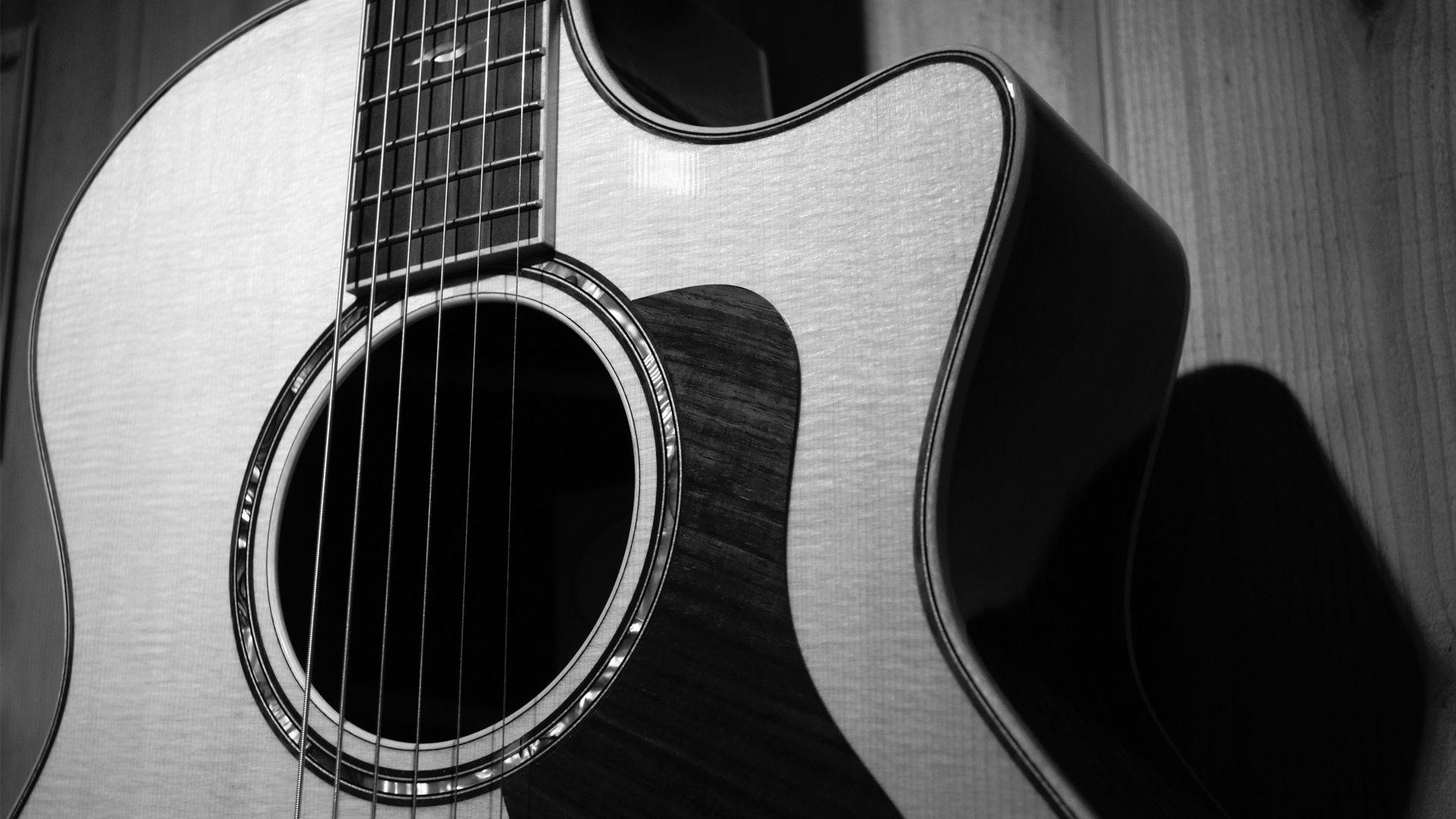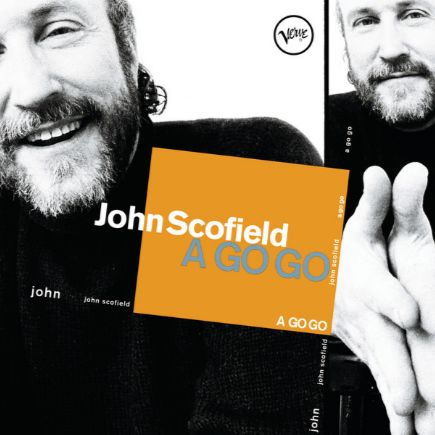John Scofield, au carrefour du jazz-rock et des traditions américaines
Guitariste et compositeur américain à la curiosité musicale insatiable, John Scofield s’impose dès ses débuts comme l’une des figures les plus originales de sa génération. Marqué dans sa jeunesse par Chuck Berry, Albert King et B.B. King, il forge son vocabulaire en jouant du rock & roll, du blues urbain et du rhythm and blues, bien avant que le jazz-rock — dont il deviendra l’un des artisans majeurs — ne prenne son essor.
Un moment décisif survient en 1974 lorsqu’il est invité à se produire au Carnegie Hall dans une formation dirigée par Gerry Mulligan et Chet Baker. Ce succès lui ouvre les portes d’une carrière internationale : il tourne alors à travers l’Amérique du Nord, puis rejoint le groupe de jazz-rock de George Duke et Billy Cobham, au cœur des premières expérimentations fusion. À partir de 1977, il multiplie les collaborations d’envergure : enregistrement avec Charles Mingus, participation au Gary Burton Quartet, intégration du quintette de Dave Liebman.
La même année, il fonde son premier groupe avec Richie Beirach, George Mraz et Joe LaBarbera, tournée européenne à la clé et parution de East Meets West puis John Scofield Live, deux albums qui affirment une personnalité à la fois incisive et harmoniquement ouverte. Après une nouvelle session en 1978, John Scofield crée une formation déterminante en 1980 avec Steve Swallow et Adam Nussbaum, donnant naissance à trois enregistrements qui consolident sa réputation.
C’est toutefois sa rencontre avec Miles Davis, en 1982, qui marque un véritable tournant. Pendant trois ans, en studio et sur scène, il accompagne le trompettiste dans une période où le jazz-funk et les textures électriques redéfinissent le langage du genre. Cette expérience, fondatrice, propulse John Scofield parmi les guitaristes les plus influents des années 1980 et 1990.
Par la suite, il multiplie les projets avec Joe Lovano, Charlie Haden, Jack DeJohnette et explore un univers teinté de soul, de grooves hérités de la Nouvelle-Orléans et de ballades introspectives. Il collabore également avec Pat Metheny et Bill Frisell, consolidant un dialogue fécond entre les grandes voix de la guitare jazz contemporaine.
Sa discographie, dense et cohérente, offre plusieurs jalons essentiels : Still Warm et Loud Jazz (1986–1987), où son jeu électrique atteint une maturité nouvelle ; Hand Jive (1993), ancré dans une esthétique soul-jazz chaleureuse ; et Oh! (2003), enregistré avec Joe Lovano, Dave Holland et Al Foster, sommet d’équilibre entre écriture, interaction et liberté.
John Scofield, en el cruce entre el jazz-rock y las tradiciones estadounidenses
Guitarrista y compositor estadounidense de curiosidad musical insaciable, John Scofield se impone desde sus inicios como una de las figuras más originales de su generación. Marcado en su juventud por Chuck Berry, Albert King y B.B. King, forja su vocabulario tocando rock & roll, blues urbano y rhythm and blues, mucho antes de que el jazz-rock —del que se convertiría en uno de los protagonistas principales— tomara impulso.
Un momento decisivo llega en 1974, cuando es invitado a presentarse en el Carnegie Hall dentro de una formación dirigida por Gerry Mulligan y Chet Baker. Este éxito le abre las puertas a una carrera internacional: gira por Norteamérica y luego se une al grupo de jazz-rock de George Duke y Billy Cobham, en pleno auge de las primeras exploraciones de la fusión. A partir de 1977, multiplica las colaboraciones de alto nivel: grabación con Charles Mingus, participación en el Gary Burton Quartet e integración del quinteto de Dave Liebman.
Ese mismo año funda su primer grupo con Richie Beirach, George Mraz y Joe LaBarbera, acompañado de una gira europea y la publicación de East Meets West y luego John Scofield Live, dos álbumes que afirman una personalidad incisiva y abierta. Tras una nueva sesión en 1978, John Scofield crea una formación decisiva en 1980 con Steve Swallow y Adam Nussbaum, dando origen a tres grabaciones que consolidan su reputación.
Sin embargo, es su encuentro con Miles Davis, en 1982, lo que marca un verdadero punto de inflexión. Durante tres años, en estudio y en directo, acompaña al trompetista en un periodo en el que el jazz-funk y las texturas eléctricas redefinen el lenguaje del género. Esta experiencia lo impulsa entre los guitarristas más influyentes de los años 1980 y 1990.
Más tarde, multiplica los proyectos con Joe Lovano, Charlie Haden y Jack DeJohnette, explorando un universo teñido de soul, grooves heredados de Nueva Orleans y baladas introspectivas. Colabora también con Pat Metheny y Bill Frisell, consolidando un diálogo fértil entre las grandes voces de la guitarra jazz contemporánea.
Su discografía, densa y coherente, ofrece varios hitos esenciales: Still Warm y Loud Jazz (1986–1987), donde su lenguaje eléctrico alcanza una nueva madurez; Hand Jive (1993), anclado en una estética soul-jazz cálida; y Oh! (2003), grabado con Joe Lovano, Dave Holland y Al Foster, una cima de equilibrio entre escritura, interacción y libertad.
John Scofield, al crocevia tra jazz-rock e tradizioni americane
Chitarrista e compositore statunitense dalla curiosità musicale inesauribile, John Scofield si impone fin dagli esordi come una delle figure più originali della sua generazione. Segnato in gioventù da Chuck Berry, Albert King e B.B. King, costruisce il proprio vocabolario suonando rock & roll, blues urbano e rhythm and blues, molto prima che il jazz-rock — di cui diventerà uno dei principali artefici — conosca il suo pieno sviluppo.
Una svolta decisiva arriva nel 1974, quando viene invitato a esibirsi alla Carnegie Hall in un ensemble diretto da Gerry Mulligan e Chet Baker. Questo successo gli apre le porte di una carriera internazionale: tournée in Nord America e successivamente ingresso nel gruppo di jazz-rock di George Duke e Billy Cobham, nel cuore delle prime sperimentazioni fusion. Dal 1977, moltiplica le collaborazioni di rilievo: registrazione con Charles Mingus, partecipa al Gary Burton Quartet e si unisce al quintetto di Dave Liebman.
Nello stesso anno fonda il suo primo gruppo con Richie Beirach, George Mraz e Joe LaBarbera, seguito da una tournée europea e dalla pubblicazione di East Meets West e John Scofield Live, due album che affermano una personalità al tempo stesso incisiva e aperta sul piano armonico. Dopo una nuova sessione nel 1978, John Scofield crea nel 1980 una formazione decisiva con Steve Swallow e Adam Nussbaum, dando vita a tre registrazioni che consolidano la sua reputazione.
È tuttavia l’incontro con Miles Davis, nel 1982, a segnare una vera svolta. Per tre anni, in studio e dal vivo, accompagna il trombettista in un periodo in cui il jazz-funk e le texture elettriche ridefiniscono il linguaggio del genere. Questa esperienza, fondativa, proietta John Scofield tra i chitarristi più influenti degli anni Ottanta e Novanta..
In seguito, moltiplica i progetti con Joe Lovano, Charlie Haden, Jack DeJohnette e esplora un universo intriso di soul, grooves di New Orleans e ballate introspettive. Collabora anche con Pat Metheny e Bill Frisell, consolidando un dialogo fecondo tra le grandi voci della chitarra jazz contemporanea.
La sua discografia, densa e coerente, offre diversi momenti chiave: Still Warm e Loud Jazz (1986–1987), in cui il suo linguaggio elettrico raggiunge una nuova maturità; Hand Jive (1993), radicato in una calda estetica soul-jazz; e Oh! (2003), registrato con Joe Lovano, Dave Holland e Al Foster, vetta di equilibrio tra scrittura, interazione e libertà.
John Scofield at the crossroads of jazz-rock and American traditions
An American guitarist and composer with insatiable musical curiosity, John Scofield quickly emerged as one of the most distinctive voices of his generation. Influenced in his youth by Chuck Berry, Albert King, and B.B. King, he built his vocabulary through rock & roll, urban blues, and rhythm and blues, well before jazz-rock came into full bloom.
A decisive turning point came in 1974, when he was invited to perform at Carnegie Hall in an ensemble led by Gerry Mulligan and Chet Baker. This success opened the door to an international career: touring North America and later joining the jazz-rock group led by George Duke and Billy Cobham. From 1977 onward, he engaged in major collaborations, recording with Charles Mingus, working with the Gary Burton Quartet, and joining Dave Liebman’s quintet.
That same year he formed his first group with Richie Beirach, George Mraz, and Joe LaBarbera, leading to a European tour and the release of East Meets West and John Scofield Live. After another session in 1978, John Scofield established a pivotal trio in 1980 with Steve Swallow and Adam Nussbaum, producing three recordings that solidified his reputation.
His encounter with Miles Davis in 1982 marked a watershed moment: for three years, both live and in the studio, he accompanied the trumpeter during a period defined by jazz-funk and electric textures, reshaping the language of the genre. This formative experience propelled John Scofield into the ranks of the most influential guitarists of the 1980s and 1990s.
In the years that followed, he undertook projects with Joe Lovano, Charlie Haden, and Jack DeJohnette, exploring soul-infused landscapes, New Orleans inspired grooves, and introspective ballads. He also collaborated with Pat Metheny and Bill Frisell, strengthening a fruitful dialogue among the major voices of contemporary jazz guitar.
His discography, dense and coherent, includes several essential milestones: Still Warm and Loud Jazz (1986–1987), where his electric playing reached new maturity; Hand Jive (1993), rooted in a warm soul-jazz aesthetic; and Oh! (2003), recorded with Joe Lovano, Dave Holland, and Al Foster, a pinnacle of balance between composition, interaction, and freedom.


